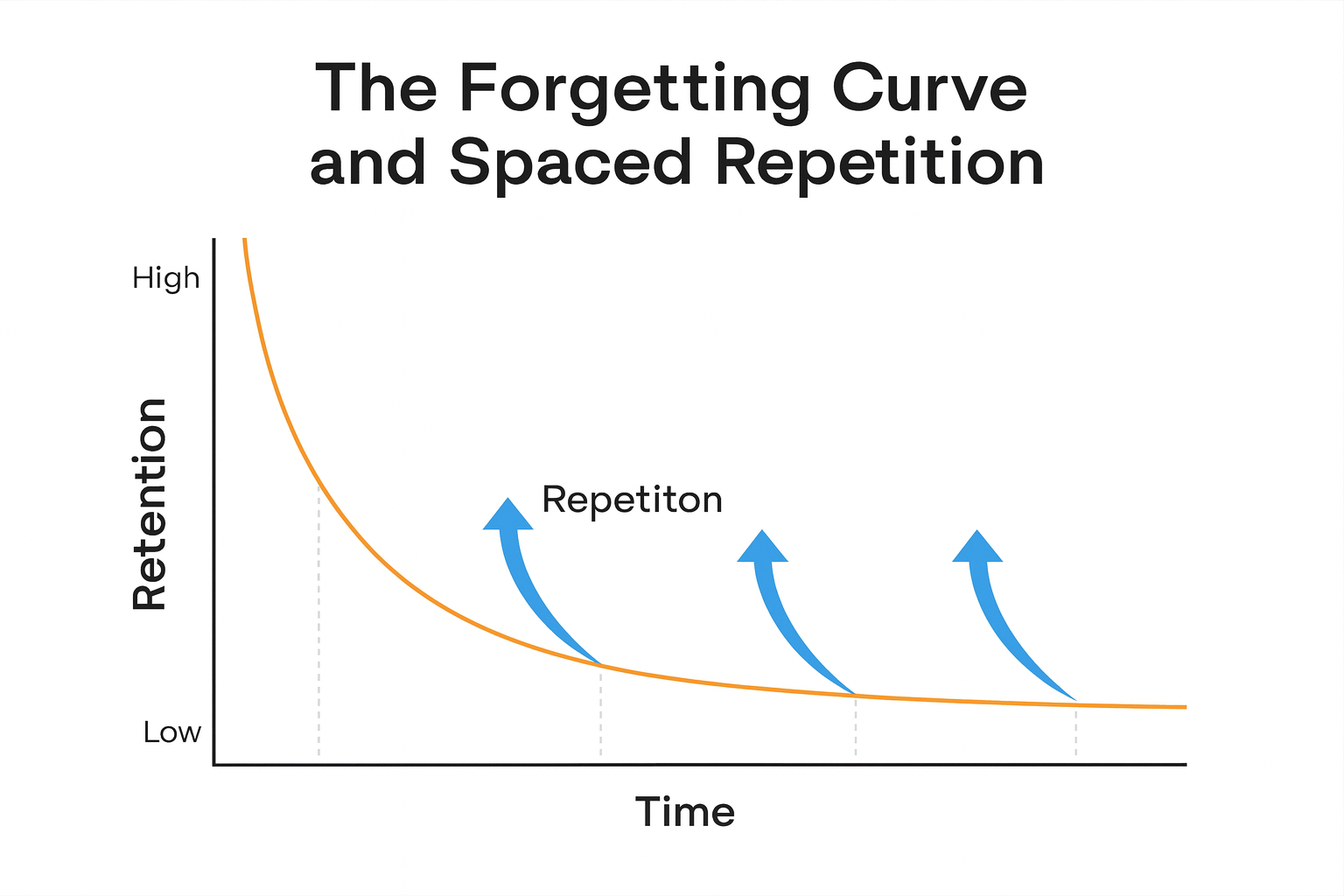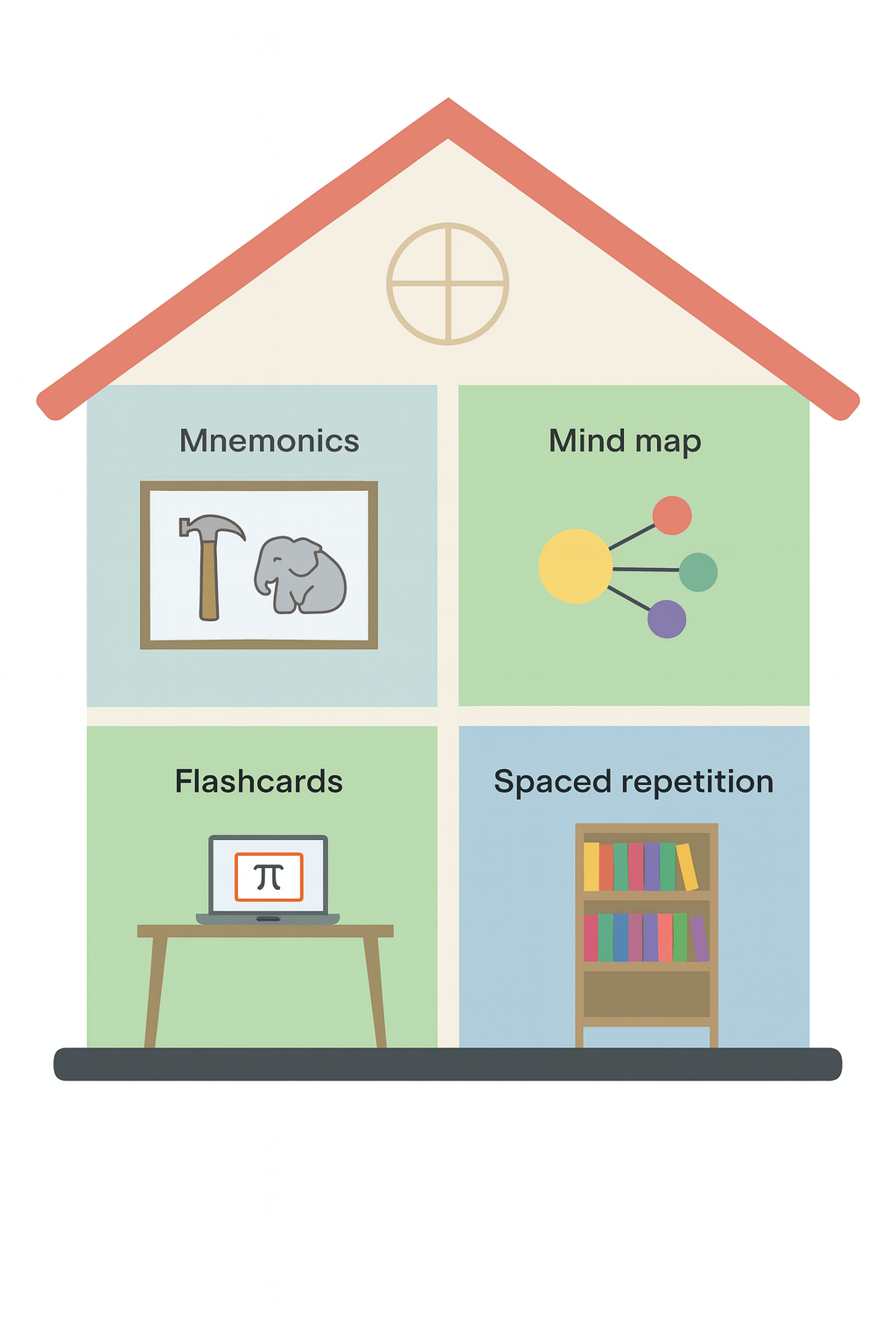Study Smarter, Not Harder
5 Science-Backed Ways to Remember Absolutely Anything
Tired of cramming? Let's unlock your brain's natural ability to learn and retain information for the long haul.

Let's be honest. We've all been there. You're staring at a textbook, highlighter in hand, convinced that this time the information will stick. You spend hours reading and re-reading, but when the test comes, your mind feels like a blank slate. It's a frustrating experience that makes you question your own memory. But what if the problem isn't you? What if the problem is how you've been taught to study?
The truth is, many of us rely on study methods that are incredibly inefficient. We treat our brains like filing cabinets, trying to shove information in, hoping it stays put. Cognitive science, however, shows us that our brains are far more dynamic. They are built to make connections, to recognize patterns, and to prioritize information that seems important. The secret to better memory isn't about having a "gifted" brain; it's about using techniques that work with your brain's natural wiring.
Whether you're tackling the SAT, learning a new language, or trying to master the complex concepts of your profession, these five proven techniques can transform the way you learn. It's time to stop working against your brain and start helping it do what it does best.
1. Spaced Repetition: Give Your Brain a Break
This might be the most powerful learning technique you're not using. At its core, Spaced Repetition is simple: instead of cramming all your studying into one marathon session, you space it out over time. You review information at increasing intervals, just as you're about to forget it.
Why Cramming Fails and Spacing Works
Think about a path in a forest. The first time you walk it, you might barely leave a trace. But if you walk that same path every day, it becomes clear and easy to follow. Your memories work in a similar way. When you first learn something, the neural pathway is weak. Cramming is like running back and forth on that path frantically in one afternoon. You'll make a mark, but it will quickly fade. Spacing your reviews over time is like walking the path consistently. Each review strengthens the connection, making the memory more permanent and easier to access later on.
This method directly counters what scientists call the "forgetting curve." We naturally forget things over time. Spaced Repetition interrupts this process at the perfect moment, signaling to your brain, "Hey, this is important! Don't delete it."

2. Active Recall: Your Brain's Personal Gym
How do you typically study? If you're like most people, it involves a lot of passive review like reading notes, watching lectures, or highlighting text. Active Recall flips this on its head. It's the simple act of trying to retrieve information from your memory *without* looking at the source.
Stop Reading, Start Retrieving
Every time you force your brain to pull out a piece of information, you're not just testing yourself; you're strengthening the memory. It's the difference between watching a workout video and actually doing the exercises. Reading your notes is passive. Closing your notebook and writing down everything you remember about a topic is active. That little bit of struggle to remember is where the magic happens. It tells your brain that this information is valuable and needs to be easily accessible.
Here’s how to put it into practice: After you read a chapter, close the book and summarize the key points out loud. Or, create questions for yourself based on your notes and then try to answer them from memory. This simple shift from passive input to active retrieval will make your study sessions dramatically more effective.
The Power Combo in Quizly Prep
You might see where this is going. Spaced Repetition and Active Recall are the two foundational principles that make Quizly Prep so effective. Our app is designed to handle the scheduling for you (Spaced Repetition) while prompting you to remember the answers on your own (Active Recall). It's a powerful one-two punch for learning that is baked right into our system.
Give it a Try for Free3. The Method of Loci: Build a Memory Palace
This technique sounds like something out of a fantasy novel, but it's an ancient and incredibly powerful method that leverages your brain's amazing spatial memory. The idea is to associate the things you want to remember with a physical location you know well, like your home.
How to Turn Your Home into a Memory Hub
Our brains are wired to remember places. This skill was essential for our ancestors to find their way back to food, water, and shelter. The Method of Loci, or Memory Palace, taps into this innate ability. You start by choosing a familiar location and mapping out a specific route. For instance, you walk in your front door, pass the shoe rack, enter the kitchen, and then go to the living room couch.
Then, you take the items you need to remember and place them, in your mind, at specific points along this route. To make them memorable, you want to make the images vivid, absurd, and animated. If you need to remember a grocery list of milk, bread, and apples, you might imagine a river of milk flowing from under your front door, a giant loaf of bread blocking the hallway, and apples exploding from your television. To recall the list, you simply take a mental walk through your house and see what you've left behind.

4. Chunking: Making Big Ideas Bite-Sized
Have you ever wondered why phone numbers and credit cards are broken up into smaller groups? It's because of chunking. Our working memory, the brain's temporary sticky note, can only hold a small amount of information at once, typically around 4-7 items. Chunking is the simple strategy of grouping information into smaller, meaningful units.
From Overwhelming to Organized
Trying to memorize a long string of numbers like 149217761945 is difficult. But what if you chunk it into three famous dates: 1492, 1776, 1945? Suddenly, it's easy. You've taken twelve individual items and turned them into three manageable chunks.
You can apply this to anything you study. Instead of trying to memorize a long list of historical events, group them by era or by country. Instead of memorizing every bone in the body at once, chunk them into groups like the arm, the leg, and the torso. This simple organizational trick reduces the mental load on your brain, making it easier to process and store the information.
5. The Feynman Technique: If You Can't Explain It, You Don't Understand It
This technique, named after the brilliant physicist Richard Feynman, is a fantastic tool for learning complex topics deeply. The entire process is based on a simple premise: the ultimate test of your knowledge is your ability to explain it in simple terms.
How to Really Know What You Know
The process is straightforward. First, take a concept you want to learn and write it at the top of a piece of paper. Then, try to explain it in your own words, as if you were teaching it to a middle school student. Use simple language and analogies. Don't just recite the definition from the textbook.
As you do this, you'll quickly discover where you get stuck. These are the gaps in your understanding. This is the most important part of the process. Now you know exactly what you need to go back and review. Once you've filled in the gaps, refine your explanation until it's simple, clear, and concise. This technique forces you to move beyond shallow recognition and build a true, lasting understanding.
Your Journey to Better Learning Starts Now
The beautiful thing about these techniques is that anyone can learn to use them. Effective learning isn't a gift; it's a skill you can develop. By incorporating these methods into your study habits, you can stop feeling like you're fighting your own brain and start building a stronger, more reliable memory.
Don't feel like you have to master all five at once. Pick one that resonates with you and try it in your next study session. You might be surprised at how much more you can learn and remember when you give your brain the tools it needs to succeed.